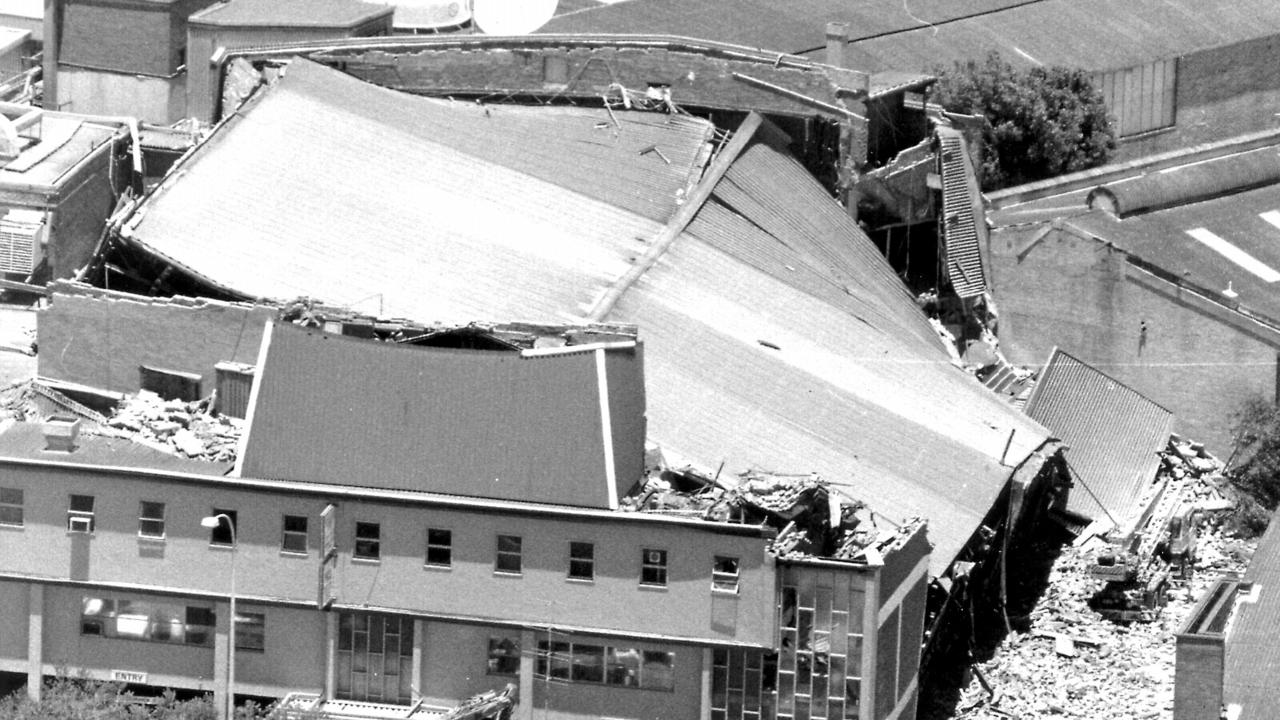Australia on shaky ground with thousands of buildings at risk of collapse in earthquake prone cities
Nearly half of all infrastructure in Australia’s most earthquake-prone cities is at risk of collapse in the event of a tremor, experts warn.
Nearly 50 per cent of building stock in Australia’s most earthquake-prone cities would crumble at the slightest tremor due to inadequate building standards, experts have warned.
Research conducted by Geoscience Australia (GA) discovered an alarmingly high rate of infrastructure categorised as “unreinforced masonry”, which they say is inadequate to withstand small to moderate earthquakes.
Unreinforced masonry refers to buildings with both load and non-load bearing walls – typically made of brick, cinderblock, tiles, adobe or other masonry – that are not braced by reinforcing material, such as steel bars in the concrete or cinderblock.
GA found that 45 per cent of building stock in the greater Melbourne CBD was unreinforced, with similar findings coming out of Adelaide – a city researchers recently discovered could be hit by a tremor up to 30 times the power of the deadly 2011 Christchurch earthquake – and Perth, where 48 per cent of stock was unreinforced.
Stream more news on the environment with Flash. 25+ news channels in 1 place. New to Flash? Try 1 month free. Offer ends 31 October, 2022 >

“A lot of heritage buildings are unreinforced, and obviously those are of great historical value, but they pose a major risk to people, especially on the street,” Mark Robert-Edwards, structural engineer and director of the community safety branch at Geoscience Australia told news.com.au.
“A lot of unreinforced buildings are used for commercial purposes.
“In Melbourne and Adelaide you have four to five story buildings used as shops, offices and flats – it’s quite surprising how many unreinforced infrastructure is just sitting there.”
A nationally applied building standard was applied until 1990 following the 1989 Newcastle earthquake, which measured a magnitude of 5.6, killed 13 people, and damaged more than 50,000 buildings.
However, recommendations handed to State and Federal authorities by the Australian Earthquake Engineers Society (formed after the Newcastle disaster), have failed to make it into official legislation.
“(The idea of) earthquakes only started to influence new construction from the mid-90s,” Mr Robert-Edwards said.
“The problem we have is our building regulations are not retrospective – as long as you don’t change the building significantly then you don’t have to address vulnerabilities.
“Those buildings will sit there in our cities just waiting until nature comes along and knocks them down.”
Mr Robert-Edwards said Australia should look across the ditch to New Zealand for inspiration when it came to stricter building regulation, with the earthquake-prone nation acting decisively after the Christchurch disaster.
“In New Zealand, they’ve legislated through their building act … a timeline for upgrading high-risk buildings in high-risk areas such as pedestrian precincts … those buildings had to be retrofitted, regardless of heritage value,” he said.
Why does Australia have earthquakes?
A common myth is that because Australia doesn’t lie on any tectonic plate boundary, the country isn’t at risk of earthquakes.
However, while Australia certainly doesn’t experience tremors to the same extent as regions such as Japan, South America or New Zealand, fault lines in the Indo-Australian Plate still cause quakes on the mainland.

“Tectonic plates are like a pavlova – if you have two pavlovas smashing against each other the edges of the crack and the surface area in the middle cracks too – not as much, but it’s still being compressed,” said Seismology Research Centre chief scientist Adam Pascale, who runs a TikTok dedicated to earthquake factoids.
“Australia is on top of a plate, but there are lots of faults running throughout the country because of that pressure it’s under.”
Tremors are less frequent in Australia, but just as dangerous – especially if they occur close to urban areas.
“Newcastle was around a 5.5 magnitude and was reasonably close to the CBD which caused the poorly engineered Newcastle Workers Club to collapse – that’s where most of the fatalities were,” Mr Pascale said.
‘“Obviously the closer you are to tremor, the stronger the ground shakes – a moderate earthquake directly underneath the city centre can cause devastation.
“A few months before Christchurch there was a magnitude 7 – that was 40 kms away and while it was bad, it was nowhere near what we saw with the one a few weeks later.”


Mr Pascale echoed the concern of other experts around unreinforced buildings, but also noted that lower risk levels down-under had to be taken into account.
More Coverage
“You don’t want to build beyond what’s reasonable so you have to weigh up the risk – you’re not going to build something in Sydney the same way as in California for example,” he said.
“There are ongoing procedures in place – people don’t wait for an event to happen before they start preparing anymore which is good.
“People aren’t as aware of earthquakes in Australia and they don’t fully understand why we have them here in the first place – ongoing scientific communication is a really important part of that to help keep awareness high.”






